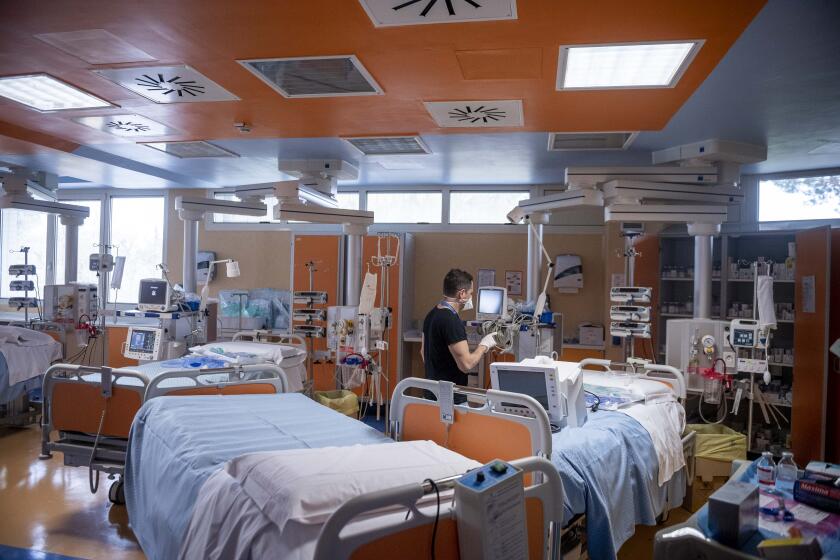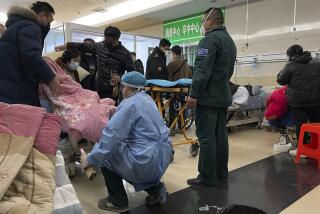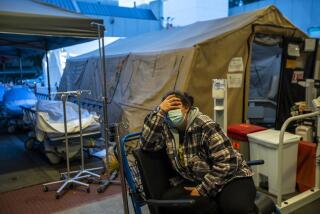In coronavirus-stricken Italy, a new field hospital quickly rises with volunteers’ help
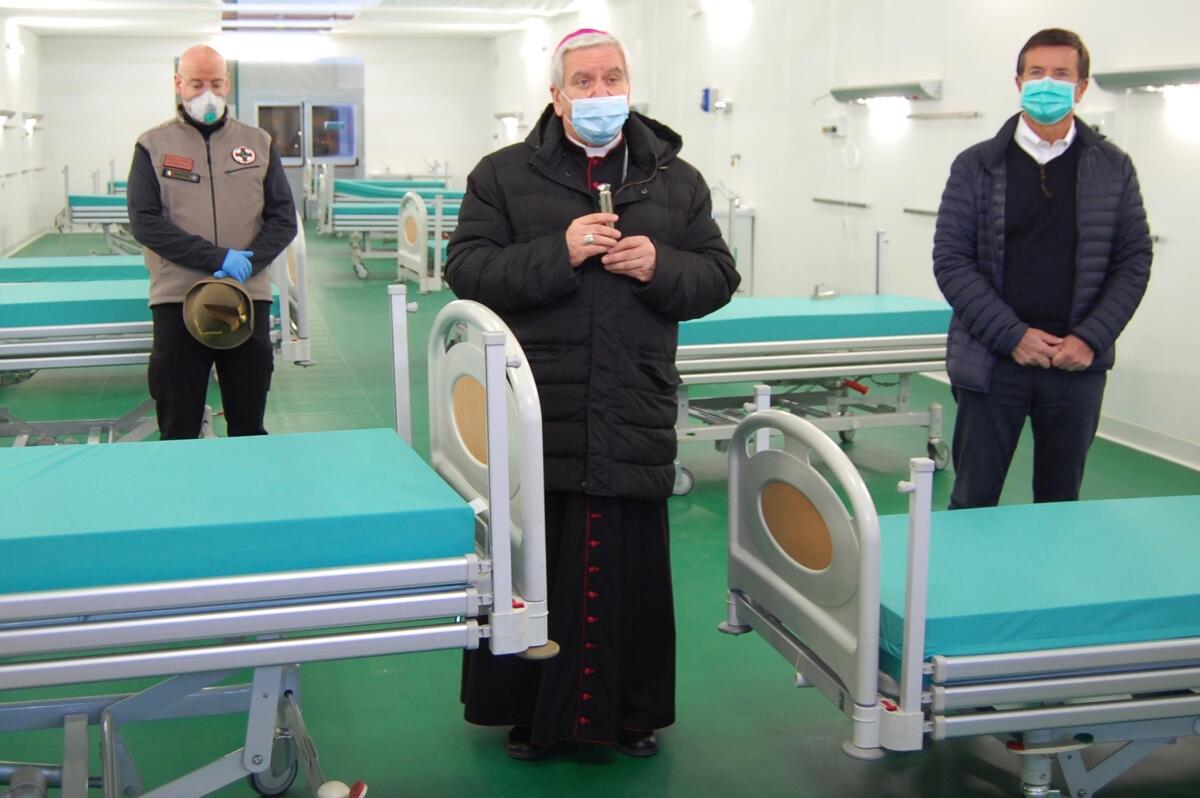
- Share via
BERGAMO, Italy — Italy’s historic mountain infantry, the Alpini, got ahold of pavilion B at the convention center in Bergamo in late March under emergency conditions brought by the coronavirus.
At that time, pavilion B amounted to nothing more than 6,500 square meters of empty hall space, pavement and ceiling ducts.
By April, members of the infantry wearing the Alpini’s iconic pointed green hat with black feathers were on their hands and knees, scrubbing the new wooden floors of a COVID-19 field hospital complete with intensive-care units, physician changing rooms, oxygen hook-ups and test labs.
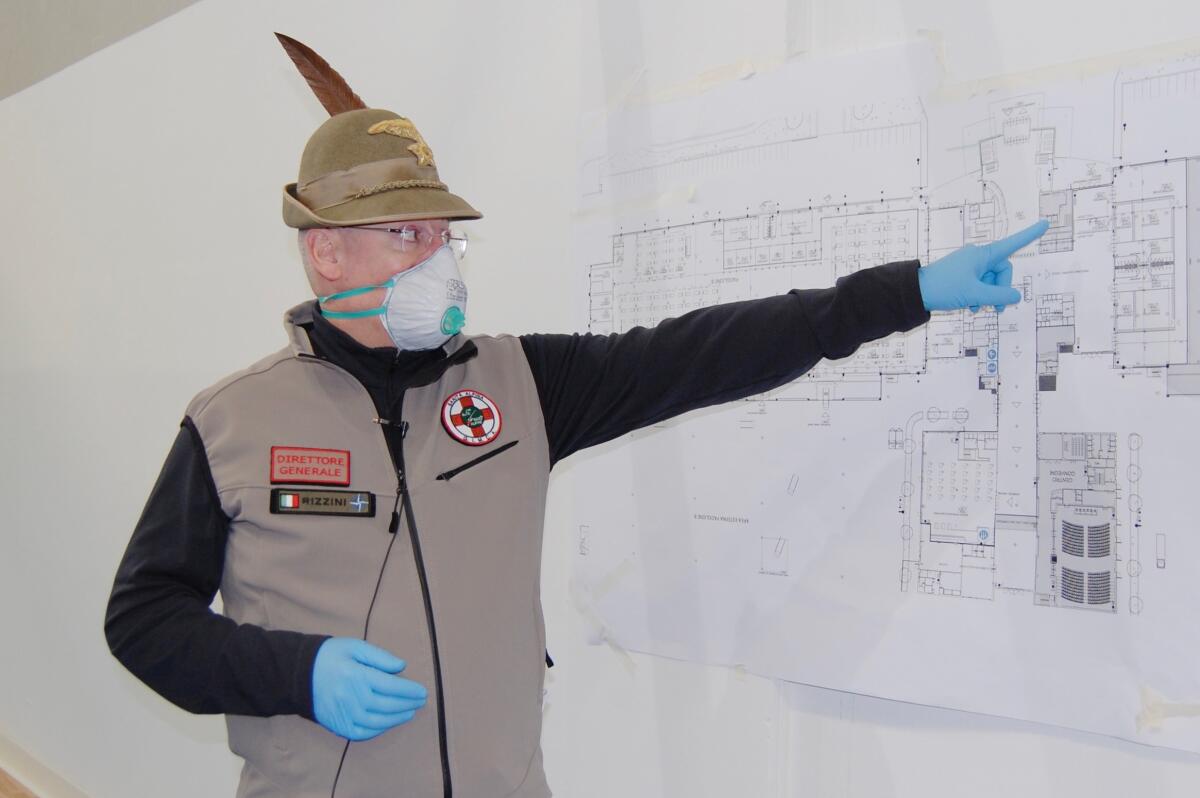
The local chapter of the National Alpini Assn. — which includes current, former and reserve infantry members — had led a 300-volunteer effort to complete the 142-bed hospital in nine days instead of the usual 60 to 90, organizers said.
“We are the people who don’t give up,” they sang while they worked.
Starting Monday, coronavirus-infected patients will either be transported to the field hospital from their existing hospital, admitted directly from their homes or some combination of both, depending on the healthcare needs at the time, hospital officials said.
Italy has been among the countries hardest hit by the global pandemic, with about 125,000 confirmed coronavirus cases and the highest number of deaths with about 15,300 people as of Sunday. The country’s 60 million residents have been on lockdown since early March, when the government ordered most businesses to close and said residents could leave their homes only for such reasons as work, medical issues and grocery shopping.
Coronavirus health issues have devastated Italy, where medical staffs are doing whatever they can
Bergamo, nestled in the foothills of the Alps in the country’s Lombardy region, has about 120,000 residents. The city has experienced more than 9,600 confirmed cases of the coronavirus and more than 2,000 attributed deaths, though officials worry the actual number could be much higher.
The military has been transporting coffins to cities as far away as Florence — more than 200 miles to the south — to be cremated, because the local funeral services have been so overwhelmed. Many patients are dying alone, because visitors are banned from coronavirus wards to help stop the the disease from spreading.
“The atmosphere in Bergamo has been one of sadness at not being able to say goodbye and not being able to do anything to help,” said Sergio Rizzini, an Alpini reservist who took over as general manager of the National Alpini Assn.’s field hospital division in 2015. “There’s a sense of powerlessness that we’re slowly overcoming; this project is helping.”
When the Alpini put out a request for 12 additional builders to join their group of about 100 volunteers, more than 200 responded to donate their time and materials.
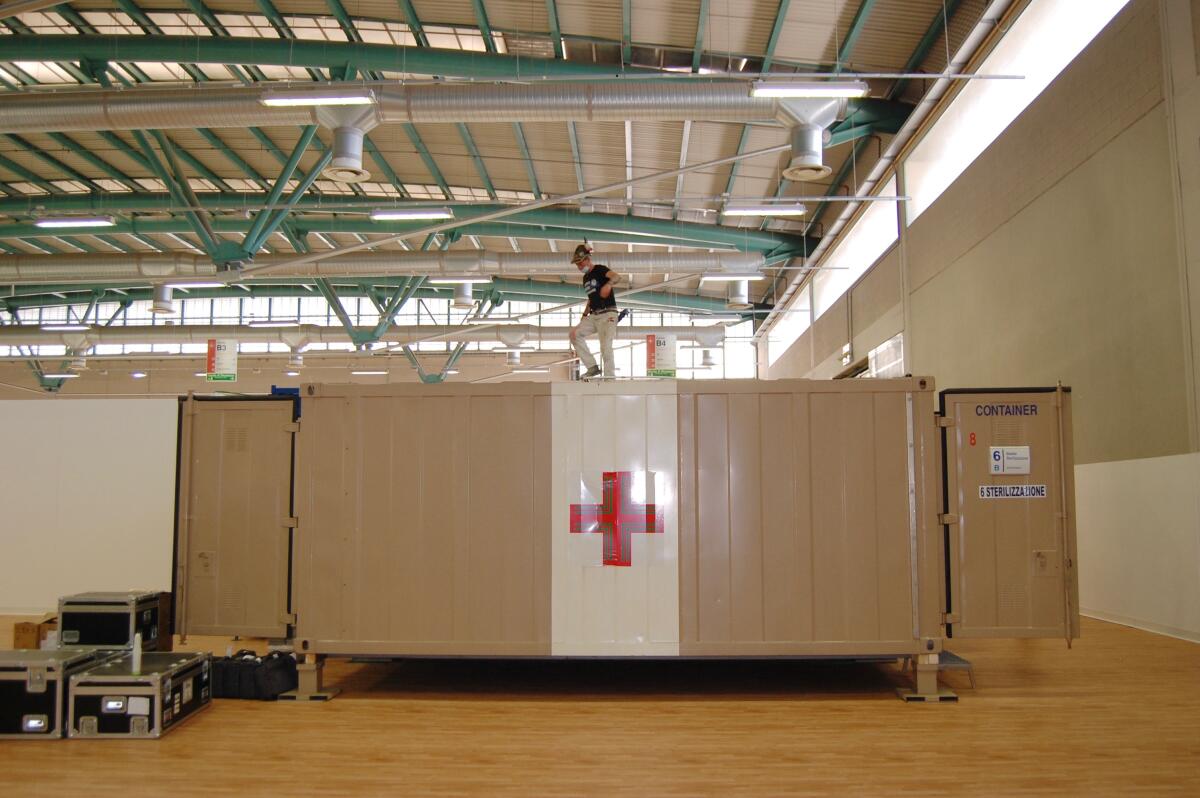
When they started raising money in the third week of March, local families and businesses donated nearly the entire project budget of 3 million euros’ worth (about $3.2 million) of funds and equipment. When the region of Lombardy delayed building authorization because of personnel concerns, more than 115,000 people signed a petition demanding the work begin.
The Italian national heathcare system is managed at the regional level, which means the regional government needed to approve the field hospital project. In mid-March, officials from Lombardy hesitated to grant permission because they said they weren’t sure they would have enough doctors to staff the facility once it was completed. The region apparently wanted to divert all of its resources to a new hospital under construction in nearby Milan, even though Milan had only half as many cases.
After the petition was launched, though, officials soon agreed to let the work begin. Over the next nine days, volunteers wearing leather bracelets engraved with the words “Mola mia” — “Never give up” in the local dialect — worked a total of 16,000 hours to complete the hospital.
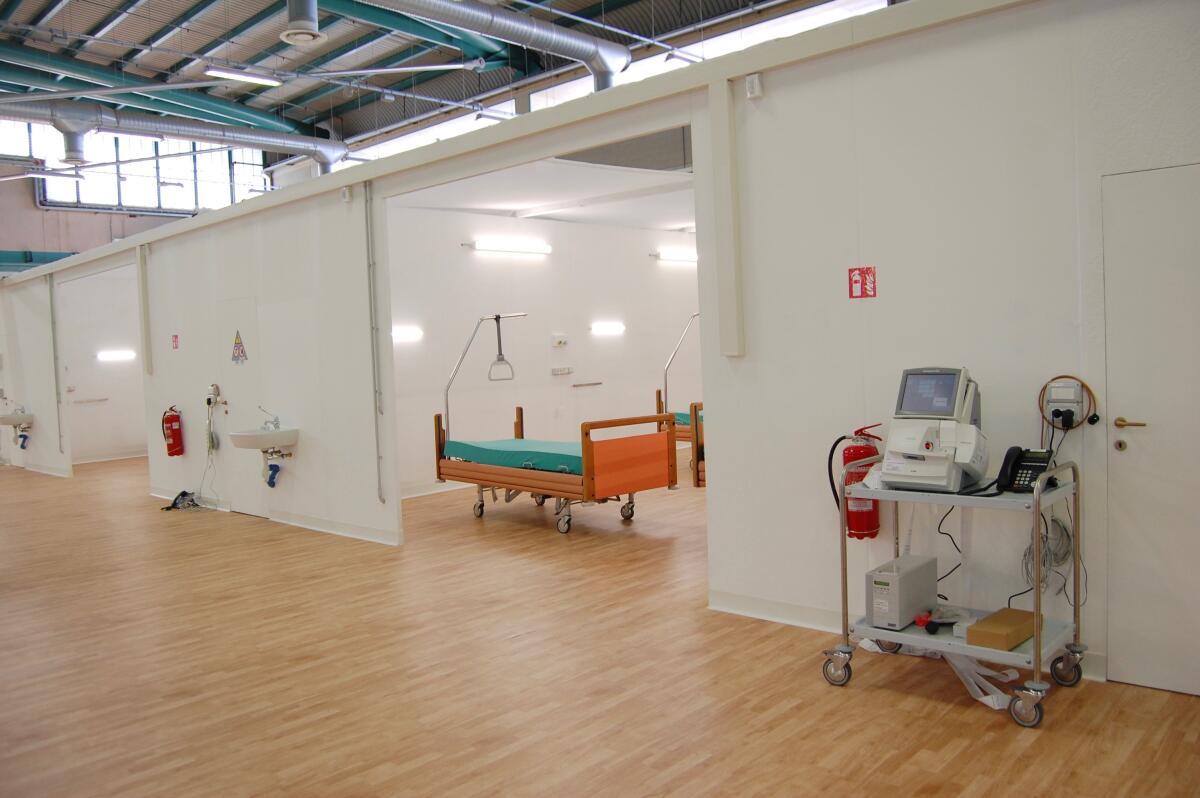
“Work is at the heart of this region’s culture,” Bergamo Mayor Giorgio Gori said Thursday as volunteers were putting the finishing touches on the field hospital. “We roll up our sleeves and get things done.”
The Alpini also have deep ties to the city and the community that allowed them to mobilize local contractors, electricians and specialists who could install equipment such as medical gas lines for free, Gori said.
The Alpini infantry was formed in 1872 to secure the northern border of the newly unified Kingdom of Italy. It is famous for its esprit de corps forged in the mountains’ harsh natural environment, Rizzini said. Today, eight regiments carry out both military and civilian aid missions around the world, including setting up field hospitals in response to natural disasters such as earthquakes and tsunamis.
Rizzini said he had studied the Ebola crisis response as part of his Alpini reserves training. He drew on that knowledge and worked with Bergamo’s existing hospital, Papa Giovanni XXIII, to design a field hospital specifically engineered to prevent the spread of the coronavirus.
The convention center’s cavernous halls have allowed organizers to put more space than usual between beds and to build hallways that are extra wide. Air will circulate more freely than in a normal hospital and will be purified with a special system.
The entire space is divided into red, yellow and green zones, with physical barriers and special sanitation protocols in place for each section. Radiology, sanitation and analytical labs are housed in classic field hospital containers.
A main goal was to protect not just patients but also medical workers, who account for 12% of coronavirus cases in Italy, Rizzini said. Doctors from Papa Giovanni XXIII will manage the facility, and the staff will include medical workers from Russia as well as the medical nonprofit organization Emergency, which provides healthcare in crisis zones.
Alpini volunteers will continue to help with logistics.
“The structure is very complete from a technological point of view,” said Vanna Toninelli, spokeswoman for Papa Giovanni XXIII Hospital. “Its value is very, very high.”
Toninelli said one of the difficult aspects of COVID-19 is that patients need intensive care for prolonged periods of two to three weeks.
Before the coronavirus, Papa Giovanni XXIII had about 1,000 beds total, 80 of which were for intensive-care patients. Now, any procedures deemed not urgent have been suspended, and all available space — such as operating rooms — has been converted into intensive-care units. About 90 ICU beds have been dedicated to coronavirus alone.
It will be quite some time before new cases of coronavirus stop and healthcare can get back to normal, Toninelli said. Officials expect the field hospital to remain operational for at least six months, or as long as the coronavirus crisis persists.
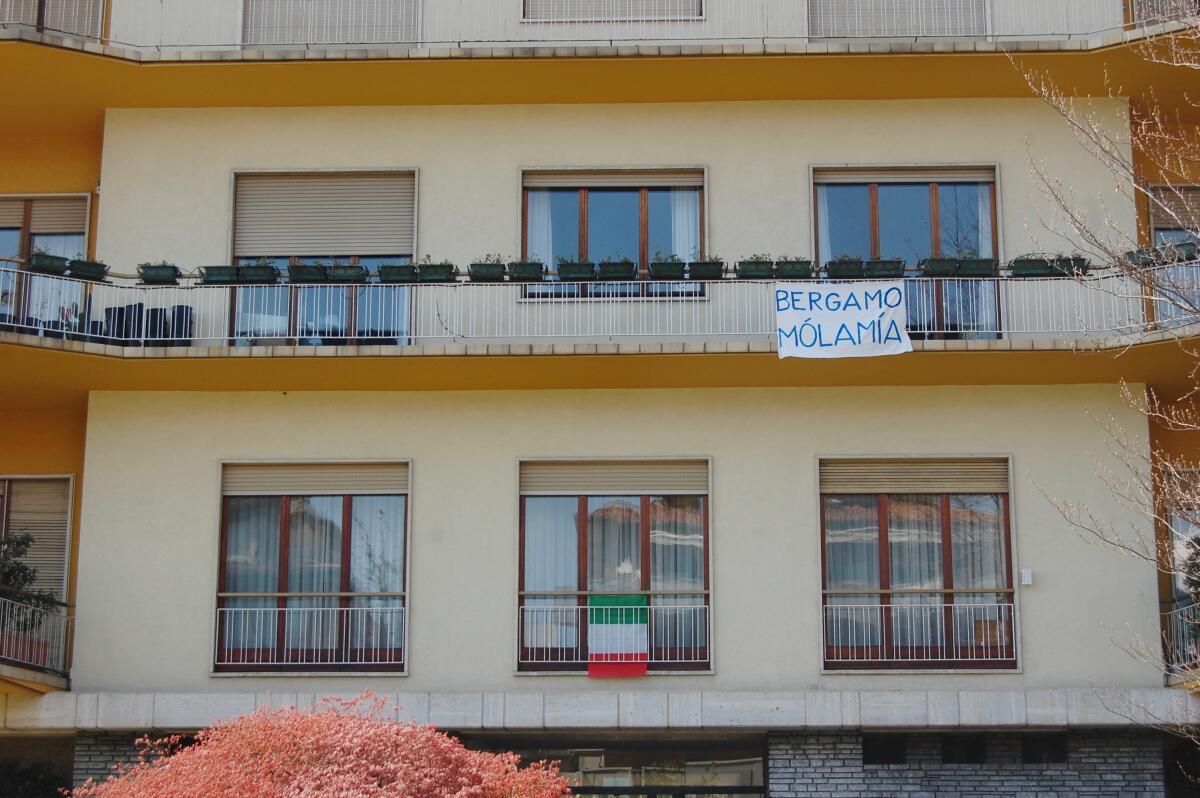
Brancolini is a special correspondent.
More to Read
Sign up for Essential California
The most important California stories and recommendations in your inbox every morning.
You may occasionally receive promotional content from the Los Angeles Times.
